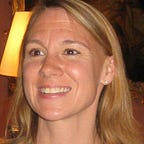Designing a life: Identifying, selecting and testing one’s next steps
Applying the core tenets of the Design Sprint to determine a life direction
We’d diverged and converged on a concept over a series of two-hour sessions over the course of two months. The concept was her life, her business, and what she was going to do next.
A year prior, I’d piloted the same process with a dear friend who had just been through a health crisis and was on the brink of something good. What would she decide? What would she do? She’d come for the weekend, and together, we’d worked through the sessions I’d been inspired to design, breaking them up with good food, good wine, walks in the forest and by the sea, music — sweet music — and laughter. My friend left with a decision and a plan, conceived that weekend, which within nine months, she’d go on to deliver, moving countries, setting up a new life, a life much closer to the one she’d wanted.
Both women had had a number of opportunities before them. And as we worked (and played), it became obvious that they had more opportunities than they originally thought. Such was the beauty of doing divergence and ideation work. They also had tough decisions to make and a plan to devise. Such is the beauty of doing convergence and focus work. Between the widening and narrowing and narrowing and widening baked into our sessions, these women went away empowered and fueled to follow through on what had previously, first in their minds and then on paper, seemed unfathomable, nearly impossible.
Back in the spring of 2021, I too had been considering the various opportunities open to me. It was time to pivot my business to something that would bring me a greater sense of contribution to the world — and satisfaction. My previous line of work was also taking a hit as COVID impacted budgets and in-person work.
One of the beauties of conceiving and running one’s own business is the freedom to design the use of one’s time and energy for good or for money or for whatever one likes. Of course, there can be significant risks in such an approach. What if what one wants to spend one’s time and energy on is not “marketable” or economically viable? How long can one afford to experiment or trial or pilot the economic viability of something one wishes to do in the world? Not independently wealthy, I had a family to support, and yet, yet … I couldn’t keep doing what I was doing (budgets, as I mention, were drying up) and I didn’t know if what I chose next would actually work.
Figuring out what to try
Enter a process that involved mapping my mission, my long-term goal and metrics for measuring whether or not I’d achieved my goal.
After mapping came sketching: sketching out ways to reframe ideas and problems as opportunities; researching and gathering examples of what others had done or were doing that inspired me; capturing my existing opportunities; and ideating new opportunities. This was the fun part!
After sketching came deciding: here, I put up all my ideas on a wall and used tools such as heat maps; revised and selected my top criteria; scored, ranked and plotted my opportunities according to my criteria; and finally, used my super vote. This was the exciting part!
Finally, there was planning: here, I designed a process in which I sketched out the next year, divided it into four 3-month periods, set top-level goals (up to three only) for each period, and then one theme per month (e.g. January = Research, February = Drafting, March = Editing). From the theme, I moved to listing projects (up to five only) per month. And finally, from projects to tasks, which were then slotted into weeks. I also worked to ensure that recovery, admin, social and focus blocks were included in my day-to-day planning. I know it sounds like a lot — but it works. I also built in evaluation points to take stock of what was working and what needed to be further tested before moving to the next period.
A process borne of the Design Sprint?
Having trialed this process with my own business pivot and gotten terrific results, I used and developed it as I’ve mentioned above, with a few others. I — and they — found that mapping an issue, sketching the possibilities, deciding on a single (or combination of) opportunitie(s) and then planning the prototyping, testing, evaluating and iterating of one’s direction was particularly helpful in identifying opportunities, selecting one and moving forward.
We, of course, see this model in the Design Sprint, and elements of this in design thinking. There are those of us who use these tools in companies, non-governmental organisations and governments. Instead of working with groups, however, I applied this in a few cases on an individual level to help them figure out their next steps. I was curious to see if it would work, and it did.
Will I continue to use this process going forward?
This wasn’t the first time I’d used elements of the Design Sprint to select and move options forward, but it was the first time I was using the entire cycle to help me make decisions that would determine my life’s direction. If one day this process is published in its entirety by its creators, and I have permission to share and work with it in my professional work, absolutely. Will I use it again the next time I need to figure out my next steps? Absolutely. Is this a process I believe will help scores of individuals at different stages of their lives? Absolutely.
Special thanks to Jake Knapp and John Zeratsky, whose ideas and work continue to inspire me.
Special thanks as well to Charlie Gilkey for his work on time blocking and the 5 Projects Rule.
